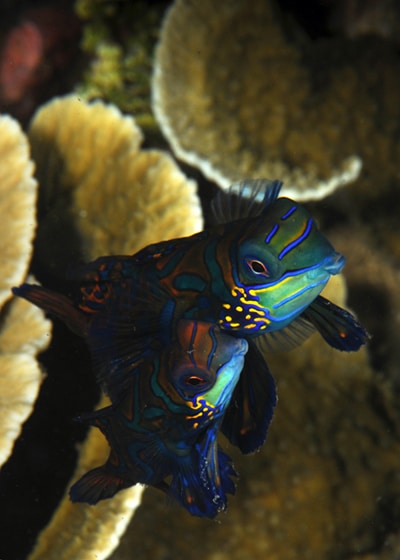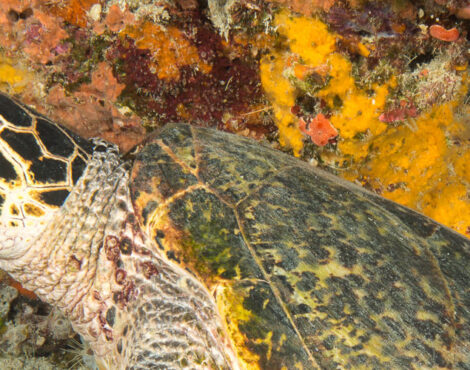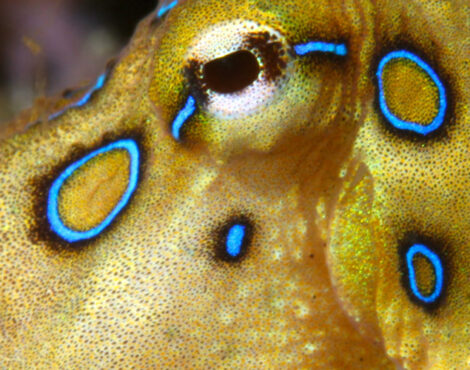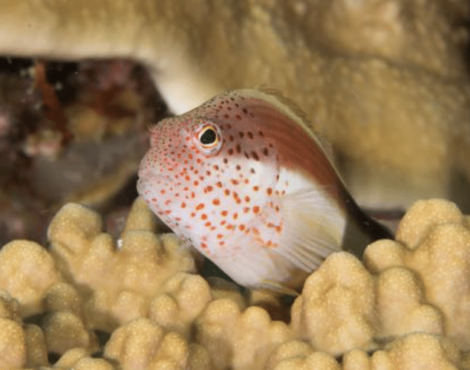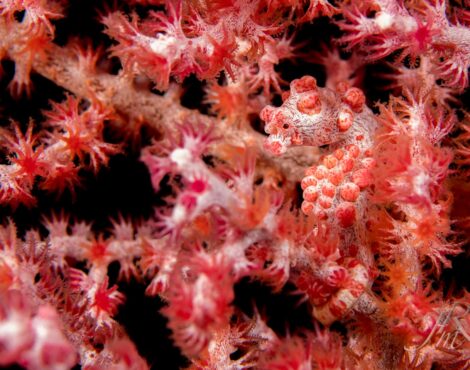Mesmerizing Mandarin Fish: A Photographic Spectacle in Bunaken Marine Park
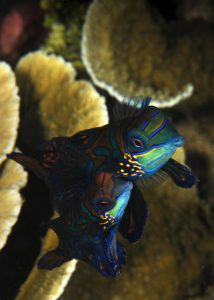 From colourful Nudibranchs, bizarre frogfish, and elegant looking turtles, Bunaken Marine Park has something to please even the most experienced of divers. The abundance of life and the variety of diving makes this corner of North Sulawesi a must visit site for keen underwater photographers and those who love to see intact coral reef ecosystems.
From colourful Nudibranchs, bizarre frogfish, and elegant looking turtles, Bunaken Marine Park has something to please even the most experienced of divers. The abundance of life and the variety of diving makes this corner of North Sulawesi a must visit site for keen underwater photographers and those who love to see intact coral reef ecosystems.
Bunaken Marine Park: A Diver’s Paradise of Colorful Wonders
Bunaken Marine Park is famed for both its diversity of species, and the health of the reefs. Although the coral reef here is extremely healthy, there are places where you find broken corals. While many people believe any area of broken coral is worth shunning, these patches of rubble are quite often completely natural due to wave action, and for some species they are the preferred environments to live in. One such species is the Synchiropus splendidus, or more commonly known as the Mandarin Fish.
The Enchanting Mandarin Fish: Beauty Amidst Broken Coral
The mandarin fish, or mandarin dragonet is a small species, growing to around 6cm in length. Despite their unimpressive size, mandarin fish are easily one of the most beautiful fish that can be found in the ocean, and considering their chosen habitat of broken and dead corals, their beauty really sticks out like a sore thumb. Their colouration is like nothing else, with a bright blue body, swirling orange stripes, and a blue green face with royal blue stripes and red eyes. To date they are one of only two known vertebrate species to have blue colouring because of cellular pigment, the other species being the psychedelic mandarin, a close relative (although far less impressive) of the mandarin fish. They get the name ‘Mandarin Fish’ because their colouration resembles that of an Imperial Chinese Officer, known as a ‘Mandarin’.
Décor aside, there is another big attraction to these small colourful fish. During the day they are extremely shy, usually hiding between the broken coral they call home, and if you are lucky enough to get a daytime glance, it is usually nothing more that 1 or 2 seconds as they scurry out of sight. While frustratingly skittish during the day, as the sun begins to set their behavior changes, and groups of females begin to emerge from the reef. Not long after, the larger males with appear and display courtship behavior, trying to attract a female.
If successful, a female will join the male by resting by his side on his pelvic fin, and the real show is about to begin. The two mandarin fish will join belly-to-belly, rise slowly to around 1 metre from the reef, and simultaneously release both sperm and eggs into the water column before darting back to the sanctuary of the reef. These fertilised eggs will now drift with the currents for only 24 hours before hatching into 1mm larvae. These planktonic larvae will spend the next 2 weeks drifting in the open seas until they find a reef to call home for the remainder of their lives.
When it comes to choosing a mate as a female mandarin fish, bigger really is better. The larger, stronger males will get chosen more often than the smaller males, as being larger probably means better genetics and higher rate of survival. This doesn’t mean the little guy doesn’t manage to reproduce though… Sometimes a smaller male will stalk a pair that is about to mate, and just as the female is about the release the eggs, the smaller male will rush the pair and release his own sperm hoping that some of his sperm will find her eggs.
Sunset Courtship: Witnessing the Magical Mating Dance
This reproduction event happens almost every sunset, and if left undisturbed you can witness a number of different pairs mating on a single dive. This is the perfect dive for passionate underwater photographers who are looking to add fantastic fish behavior shots to their collection. Once the show is over, the site can be further explored to find other critters that dwell in the rubble. You can expect to find scorpion fish, moral eels, banded pipefish and sometimes even octopus in the surrounding area.
Exploring the Mandarin Sites: Daily Dives for Adventure
We have a number of mandarin sites available to us, meaning we csn run these dives daily, leaving the resort at 16:30. The sites we have available are quite shallow, with an average depth of 5 – 6 metres.
Tidal Considerations: Planning the Perfect Mandarin Dive
Because of this, mandarin dives are dependant on the tide, and a low tide combined with a small swell can make the dive almost impossible, especially for photography. For this reason it is best to ask your guide which the best day would be, and plan it from there.

